
In a historical review of locomotive engineers, Heritage Railway magazine highlights the career of Oliver Vaughan Snell Bulleid, who succeeded REL Maunsell in 1937.
When Richard Maunsell retired from his post as the Southern Railway’s chief mechanical engineer in 1937, it coincided with news that the railway’s general manager, Sir Herbert Walker, was also retiring from office but not before he had invited Oliver Bulleid to attend a meeting at Waterloo.
Well established as personal assistant to Nigel Gresley, the LNER’s chief mechanical engineer, Bulleid was somewhat taken aback when Sir Herbert suggested that he apply for the position of the Southern Railway’s chief mechanical engineer vacated by Maunsell. Seeking advice, Bulleid returned to King’s Cross where he consulted with his own general manager, Sir Ralph Wedgwood.
Monthly Subscription: Enjoy more Railway Magazine reading each month with free delivery to you door, and access to over 100 years in the archive, all for just £5.35 per month.
Click here to subscribe & save
Having listened to Bulleid’s concerns Sir Ralph made it clear that it would be foolish to reject Sir Herbert’s invitation and so the die was cast, Gresley’s assistant moved across London to join the Southern Railway.
Intriguingly, it seems that Bulleid’s appointment was ‘engineered’ from behind the scenes.
Sir Herbert’s successor Gilbert Slumper, son of the Southern’s former chief engineer, who had risen through the ranks of the London & South Western Railway, had chosen Bulleid as the candidate for Maunsell’s replacement and to this end he had been quietly turning Sir Herbert’s thoughts towards the possibility of Gresley’s assistant being the man most suitable for the chief mechanical engineer’s chair.
Even more interesting is the fact the Southern’s extended electrification scheme was very much in the thoughts of the railway’s directors, so it was generally considered that Bulleid would act as the guiding light for the engineering department until electrification had been completed and with it, a subsequent major withdrawal of steam traction.
In reality Bulleid played an important role in the extension of the electrification scheme including infrastructure, electric multiple units and locomotives. Between 1941 and 1945 he designed the bodies for two such electric locomotives numbered CC1 and CC2. A third, built by British Railways in 1948, carried the number 20003. As readers may also remember he designed two experimental double deck passenger units classed 4DD for use on the Eastern Section.
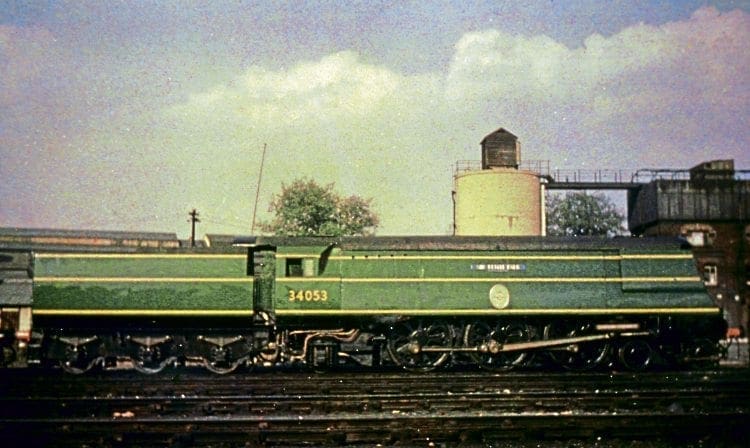
But what of the man?
The son of British parents who had emigrated to New Zealand, Oliver Bulleid was born in Invercargill in September 1882 and lived there until the death of his father William, in 1889.
At this, his mother, Marian Pugh, returned to the family home in Wales, taking Oliver with her. Following a technical education and now a young man, Oliver joined the Great Northern Railway at Doncaster as an apprentice under the wing of the railway’s chief mechanical engineer, HA Ivatt in 1901.
After a four-year apprenticeship, Bulleid was appointed assistant to Doncaster’s locomotive running superintendent and 12 months later, assistant to the company’s works manager.
In 1908 he joined the French division of Westinghouse Electric Corporation in Paris as a test engineer but was quickly promoted to assistant works manager and later, chief draughtsman.
That same year he married Henry Ivatt’s youngest daughter, Marjorie.
Two years later Bulleid came back to the UK to work for the Board of Trade, arranging trade stands in Brussels, Paris and Turin. This allowed him to travel widely in Europe including a trip in the company of Gresley, Stanier and Hawksworth to Belgium to run their collective eyes over a metre gauge bogie locomotive. This trip probably restored old friendships because in 1912 Bulleid rejoined the Great Northern as personal assistant to Gresley.
When World War I broke out he joined the British Army’s Railway Operating Division rising to the rank of major. Surviving the conflict, Bulleid returned to Doncaster where he was given the post of carriage and wagon works manager.
After the Big Four became established in 1923 he was reinstated as personal assistant to Gresley, now chief mechanical engineer of the London & North Eastern Railway. It was during the subsequent years that Gresley produced his famous locomotives that included the P1 2-8-2 freight engine, the P2 2-8-2, 2-8-0+0-8-2 Garratt, and A4 passenger locomotives.
Without doubt Bulleid was involved in many aspects of the design and construction of these engines, gaining much valuable experience at the same time.
However, when he crossed the tracks to Waterloo he was conscious that Maunsell had not been in the best of health for some years and as a consequence of his health problems – and the rapid expansion of electrification – had gradually lost interest in future locomotive development following the introduction of his Nelson 4-6-0s and Schools 4-4-0s supported by S15 4-6-0s, U, U1 and N mixed traffic 2-6-0s, which were all coping with the Southern’s front line traffic, apart that is from the heavy boat trains running on the Eastern Section.
Bulleid was aware of the situation and when he took office he set about the task of assessing the Southern’s motive power line-up. To get a personal close-up, Bulleid spent a great deal of time out and about on the footplate of principal passenger locomotives during which he learned that the Nelsons were not performing as well as originally expected. Indeed, when the then-new Nelsons were tested on Waterloo-Salisbury-Exeter passenger services they failed to improve on regular day to day timings kept by King Arthur class 4-6-0s, more especially over the hilly Salisbury-Exeter sections.
A regular visitor to France, representing Gresley, Bulleid was well informed on developments being tested by Chapelon at Vitry, some of which were incorporated in the LNER’s A4s.
As a result of his experiences gained on both sides of the Channel, Bulleid decided to experiment by changing Nelson’s original single blastpipe to follow the Lemaitre arrangement of a series of multiple jets which when fitted improved the 4-6-0s’ performance to a noticeable degree. In time the whole of the class were suitably equipped.
Intriguingly, the Lemaitre arrangement was applied to a number of Urie Arthurs – by then considered ‘second line’ engines working semi-fasts, boat and van trains and specials. Performances were improved and, encouraged by this, Bulleid modified half the Schools class in similar manner but it made little difference to these splendid engines…
But this is racing ahead of the Southern’s newly appointed chief mechanical engineer’s contribution to the railway. Before assessing the motive power line-up he was to oversee the construction of three 350hp 0-6-0 diesel-electric shunters ordered by Maunsell in 1936 and which, when put into traffic, proved to be capable shunting engines.
This was followed by an order for another eight but this was subsequently cancelled when war was declared with Nazi Germany in September 1939. Surprisingly, a further 26 of Bulleid’s modified version were ordered and delivered between 1949-1952 and became British Railways Class 12 diesel-electrics.
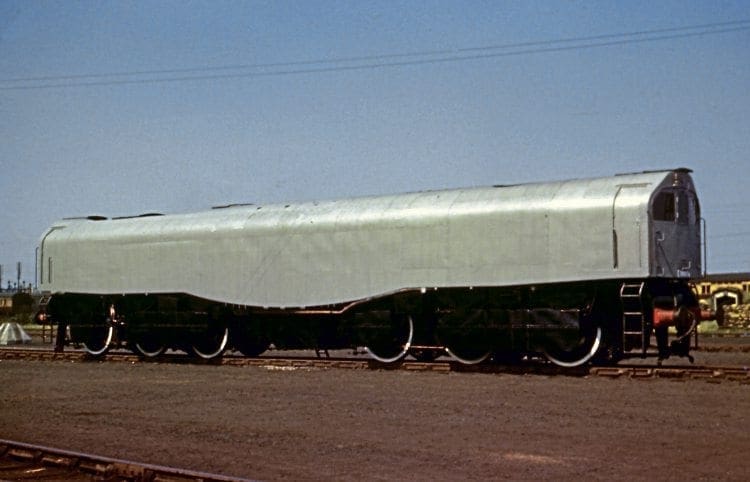
Then, as already touched upon, he played an important role in the extended electrification scheme that had to be temporarily abandoned when war was declared but never resumed by the Southern and it also meant that steam power would be retained.
In 1938 Bulleid was given approval to build the first of his modern 4-6-2 locomotives. Inspired by Gresley’s designs and coupled with his own experiences gained in Europe, Bulleid’s design incorporated the latest advances in locomotive construction, which included a partially-welded boiler and firebox, thermic siphons and high pressure boiler. He also added the controversial chain-driven valve gear placed within an oil bath.
In preparing the design Bulleid had long thought that it was not ideal to expose working parts to the vagaries of the weather, grit, dust and other small debris thrown up from the ballast at speed. He also thought that steam locomotives should move towards the principles of the internal combustion engine, with its enclosed mechanical parts served by pumped lubrication. He estimated that his idea of enclosing the valve gear would reduce day-to-day maintenance…
The locomotive? The first of the Merchant Navy class, numbered 21C1 Channel Packet.
Here again Bulleid changed the routine by using symbolic numbering for the new engine derived from European practice. A letter denoted the number of coupled wheels, which in this case was C for three.
The letter was preceded by figures representing the number of carrying axles before and after the coupled wheels, in this case 2 and 1 for the front bogie and trailing pony truck e.g. 21C. This was followed by the engine’s number (1) to complete its identification – 21C1. The class was named after shipping lines that used Southampton docks, served by the SR.
When Bulleid mooted his design as a 4-6-2 he overcame the Railway Executive Committee’s ruling that only freight engines could be built during the war years by describing his 4-6-2 as ‘Mixed Traffic’. Just to prove it he arranged for photographs to be taken – and published – of 21C1 hauling a long rake of goods vans and wagons…
Outshopped from Eastleigh in March 1941, Channel Packet was followed by No. 21C2
Union Castle which, after a naming ceremony held in June, hauled a special train carrying Union Castle Line directors to Merstham for lunch.
On the return journey the engine failed near Norwood, the guests being taken back to Cannon Street by nothing more impressive than a former LBSCR 13 class 4-4-2T! But worse was to follow. Bulleid had claimed that one of his Merchant Navy 4-6-2s was capable of hauling a 20-coach train from Waterloo to Exeter and back.
At his request a demonstration train was arranged for a Sunday in November. Guest passengers included the Southern’s assistant general manager, representatives of other railways chief mechanical engineers and members of the technical press. The chosen engine was No. 21C3 Royal Mail booked to stop at Salisbury for water (and a possible crew change).
In a prudent move, No. 21C2 was stationed on shed at Salisbury as standby engine. The 20-coach train made an impressive departure from Waterloo and ran well until it slowed at Farnborough and came to a stop at Basingstoke, the 4-6-2 suffering a broken rocker shaft.
An H15 4-6-0 was summoned from the nearby shed and took the train on to Salisbury, where Union Castle took over but affairs did not improve. No. 21C2 was unable to maintain full brake vacuum, the train finally reaching Exeter three hours late.
In order to return the unfortunate guests back to Waterloo in a reasonable time, the 20 coaches were reduced to eight which, as might be imagined, produced a similar level of passenger comfort to that of third rail commuters packing early morning trains.
To cap it all the Arthur class 4-6-0 hauling the train ran short of steam, having to stop several times for a ‘blow up’. According to historical accounts, the railway press remained charitably silent on this occasion…
When Sir Eustace Missenden, then general manager, heard of the incident, he asked Bulleid to keep his 4-6-2s west of Salisbury until the locomotive testing team got the engines to work more reliably.
As a result of Missenden’s instructions, all 10 of the first batch of Merchant Navies were sent to Salisbury shed, where members of the testing team gathered.
As it turned out Salisbury was a convenient testing centre because it was a comparatively short distance by rail to Eastleigh, from where spares could be supplied or for despatching an engine in trouble to the works for attention.
Some of the problems encountered by the testing team included a curious fault which emerged when changes in power output occurred without an obvious reason. This, it was discovered, could be corrected by placing the reverser lever towards full travel and then opening the regulator.
Eventually, the cause of the problem was traced to the steam operated gear which habitually crept away from the position in which it had been set. It was not possible to rectify this entirely, although the gear was modified to make it less erratic but enable drivers to make smaller adjustments to the cut-off.
This was only one of several problems encountered and signalmen at junction stations along the line became accustomed to being informed that one of the engines – which became known as ‘Packets’ – would have to come off its train at their station.
One of the most common failures was caused by a broken rocker shaft, which was indicated by the engine losing two beats.
The cause of the problem was traced to an unbalanced steam chest pressure – that is a pressure difference between the two ends of the piston valves.
The solution was to strengthen the rocker shafts by increasing the original 2.5in diameter to four inches. Bulleid ordered 50 to be made and sent to Salisbury. The steam chests were subsequently redesigned.
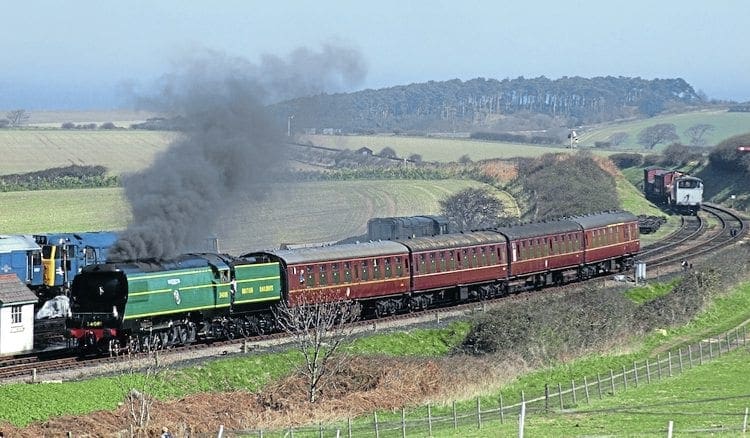
Interestingly, the test team came up with a quick method of checking trouble. A suspect engine would be shunted into a siding and the rails oiled. Then, with brakes on, the regulator was opened. If nothing amiss was heard the engine would be returned to traffic and, as likely as not, would work normally, as happened one day at Yeovil.
The 4-6-2 was taken off its train – which went forward with another engine – and was given the oil on track test. Nothing was heard so the engine was returned to traffic, heading another departure.
Another feature of the Bulleids was oil spillage and leaks, the latter due to the fact that the casing of the oil bath was prone to leaking at the seams. This could produce fires! These would often occur after heavy braking when descending steep gradients with slivers of hot metal from the brake blocks shot up into oil-soaked lagging under the air-smoothed casing.
The lagging became soaked in oil from the sump which housed the middle big end because it was virtually impossible to maintain the sump oiltight, the loss being quite substantial and contributed to starting fires on Bulleid’s engines.
An amusing incident on the Somerset & Dorset – recalled by Peter Smith in his book Mendips Fireman – illustrates the point. When descending the Mendips with up ‘Pines Express’ the fireman, Bill Bailey, noticed smoke coming from under the casing of West Country No. 21C140 (34040) Crewkerne and concluded that there was a fire.
Since it was a fairly frequent occurrence he decided that the fire would burn itself out quite quickly. But after passing Midsomer Norton, the smoke and heat were so bad that he drew his driver’s attention to his side of the footplate. Taking a look, the driver, none other than Donald Beale, said: “That’s nothing. You should see my side!”
Knowing he would have to stop to put the fires out, Donald Beale made for Radstock to get his train under the protection of fixed signals. On arrival the nearest fire extinguisher – on the train – was brought into play, quickly snuffing out the flames.
However, someone had called the local fire brigade, which turned up just as the ‘Pines’ was ready to depart.
Assuring the senior firemen that all was well, the driver was told to stay with his train at the platform while the firemen carried out their duties.
While this was going on, the fire crew were trying to open a drum of foam with which they were going to spray the 4-6-2. When the drum was eventually opened a fireman holding the hose happened to be facing a stone wall which soon became splattered in white chemicals… Once the foam had been redirected onto the engine and the senior man was satisfied that that the fires were out he allowed the train to proceed!
It could only happen on the Somerset & Dorset one might think…
Then, of course, there was the propensity for Bulleids to slip. When studying at senior school I would take a No. 25 trolleybus to Bournemouth Central – on my way to assembly – and watch the 8.40am and 8.45am departures to Waterloo. The 8.40am was a businessman’s train stopping only at Southampton on its way to the City and was formed at the Central station.
The rear six carriages would arrive from Weymouth behind a 4-6-0 and the coaching stock shunted backwards by regular pilot, either M7 0-4-4T No. 111 or 112, to a siding running alongside the locoshed.
Within minutes the front portion – including restaurant car – would arrive from the West station with a Bulleid 4-6-2 at its head. The rear set of carriages was then shunted forward and coupled on. These movements took about five or six minutes so the train engine would have its tender tank topped up while the fireman shovelled coal forward. When given the road quite often the fireworks started!
Now the London end of the platform was curved – which obviously didn’t help – and when the driver cautiously opened the regulator, the 4-6-2 of the day would edge its train forward a yard or so and then slip in spectacular fashion. This was a full-blooded slip, black exhaust shooting up into the sky followed by a column of high pressure steam released from the safety valves rising almost vertically into the heavens.
The visual effects were further improved by the 4-6-2’s drivers spinning at speed through clouds of steam from the sanders forcing sand onto the metals. Noise. As the driving wheels spun out of control the sound of the wheels slipping on shiny metal was accompanied by sparks and the rattle of rods working at relatively high speed, which, in turn, set air smoothed casing vibrating. It was quite exhilarating but not for those on the footplate where the driver was playing chance with the regulator, his firemen surveying his broken fire bouncing on the firebars in the firebox…
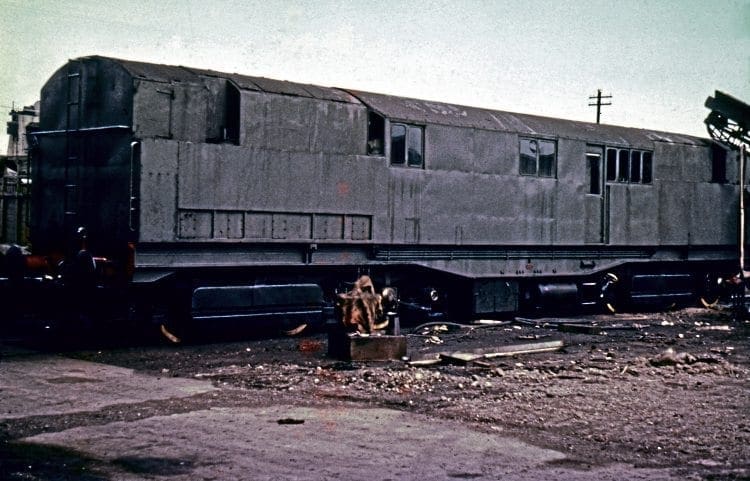
Gradually the crew won, the engine – and train – creeping forward at about 5mph in between slips. By the time the 4-6-2 reached Holdenhurst Road Tunnel – some say bridge – wheels were gripping to a steady exhaust beat.
Minutes later the 8.45am would run in from the West with the semi-fast for Waterloo behind a Nelson. Given a green, the 4-6-0 would shuffle quietly off in the direction of Boscombe (where the ‘Cherries’ play) with only the sound of carriage bogies crossing the rail gaps to remind me that Maunsell’s engine had passed out of sight…
One of the side issues arising from a heavy slip on a Bulleid was that connecting rods became bent. In such a case standing orders required the rods to be disconnected on shed and sent to Eastleigh for straightening out. This, of course, took time resulting an engine ‘stopped’ out of traffic. Apparently shed fitters soon found an answer to this by taking the rods off and sorting them out on shed without reporting to Eastleigh!
But despite Bulleid’s radical ideas and early teething problems, the Merchant Navies turned out to be excellent steamers capable of handling whatever the traffic department asked for, including 500-ton Pullman trains.
In total 30 ‘Merchants’ were built in three batches, 21C1-21C10, 21C11-21C20. The final 10 were oddly numbered 35021-35030, although only the last seven were outshopped after nationalisation.
The first of the class I saw was No. 21C11 General Steam Navigation during a long weekend in Bournemouth with my parents. When we moved to the town, the second and third batches became everyday engines as far as I was concerned. Not all at once you understand, although for a brief period Nos. 35014 Nederland Line and 35015 Rotterdam Lloyd were regulars on the ‘Belle’, both seen accelerating the Pullmans through the long-demolished aforementioned Boscombe station, next stop Southampton.
Before postwar holiday traffic to Devon and Cornwall increased in passenger numbers, the Brighton drawing office had already been given the task of designing engines cable of hauling heavier loads than Maunsell U and N class 2-6-0s over the branches west of Exeter. The result was a three cylinder 2-6-0 similar in many ways to the LNER’s K4 class.
Bulleid was not happy with this and the design was adapted to a 2-6-2 to accommodate a wider firebox. In the event both designs were abandoned with two factors leading to the adoption instead of a smaller version of a Merchant Navy.
These were the desirability of a leading bogie that was better suited to the large number of curves encountered beyond Exeter and that because of wartime production difficulties, it was helpful to include as many ‘Merchant’ features in the design as possible. Happy with the outcome, Bulleid was authorised to order 30 of the new 4-6-2s from Brighton works.
The first of the ‘Lightweights’, as they were known, was completed in May 1945 (when the German high command surrendered) and production continued until 1951, the class totalling a somewhat extraordinary number of 130 engines.
The first 70 had cabs that were six inches narrower than the remainder for the restricted loading gauge through Mountfield Tunnel on the Hastings line. Apart from a few branches, the new 4-6-2s could work virtually anywhere over the Southern system.
Put into traffic in 1945, the first engine, No. 21C101 Exeter, was the forerunner of the well-known and popular West Country class. No. 21C149 Anti Aircraft Command to BR No. 34089 602 Squadron formed the Battle of Britain class, the remainder from No. 34090 Sir Eustace Missenden Southern Railway through to No. 34108 Wincanton continued the West Country classification. Oddly though, the final two, No. 34109 Sir Trafford Leigh-Mallory and No. 34110 66 Squadron were Battle of Britain engines.
There were problems with the grate and ashpan – the drop and rocking plates often stuck in the open position so footplate crews stopped using them. Fires had to be cleared or dropped through the firehole door, which was a slow and laborious job. The absence of dampers was also not appreciated.
The story goes that Bulleid approached the fireman of a West Country at Waterloo and asked him his opinion of the engines. Not recognising him, the firemen is said to have replied: “You would have thought that the bloody fool who designed them would have had the sense to fit dampers!”
A great deal of work went on behind the scenes to find a satisfactory answer to Bulleid’s resistance to fitting devices to prevent steaming…
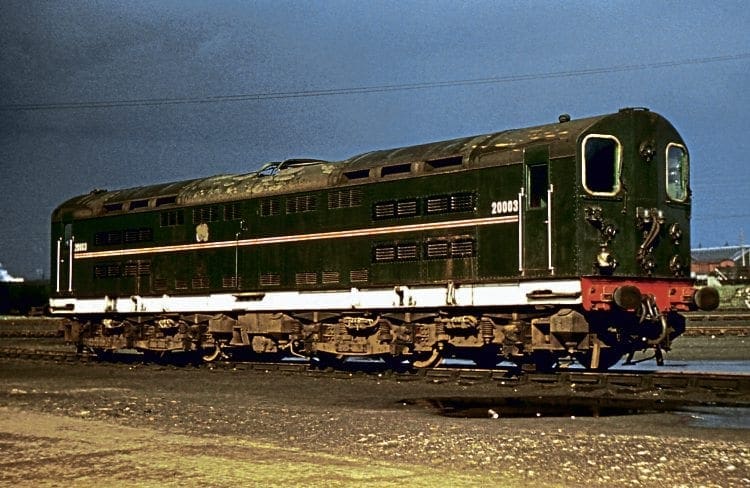
As might be expected, the West Countries inherited all the problems associated with the oilbath, the Bulleid motion, boiler casing, and springing but, like their big sisters, most of these were ironed out.
In retrospect it must be said that both classes were brilliant performers – when in good condition – although heavy in the cost of coal, oil, water and maintenance.
Despite his radical approach to locomotive designs, Bulleid had succeeded in creating the Southern’s most modern and powerful engines built at Eastleigh and Brighton.
Bulleid’s other contribution was to design that ungainly but practical and powerful Q1 0-6-0 goods engine which, according to knowledgeable sources, had insufficient braking power to work a heavy loose-coupled goods train. Known as ‘Charlies’ to footplate crews, no less than 40 of the class were constructed and numbered from C1 upwards.
Bulleid’s ultimate design was the ill-fated Leader class, which had boiler, coal, water – well everything – encased in a double-ended body reminiscent of latter-day diesels. The drive was delivered through two six-wheeled bogies, each having three cylinders.
In addition to test run breakdowns, more than one fireman collapsed in the intense heat generated in the enclosed firing end and after Bulleid left the nationalised Big Four, the project was abandoned and the engines were scrapped.
Joining Coras Iompair Eireann – the Irish Republic’s nationalised transport authority – Bulleid was involved in the procurement of diesel locomotives and DMUs, which began the transformation of railways in Ireland. He developed two prototype peat-burning engines, one a converted coal fired 2-6-0, the other a new fully enclosed locomotive along the lines of his Leader idea, but these were not adopted for general use.
Bulleid retired in 1958 and moved to Devon. In 1967 he moved to Malta where he died three years later aged 87.
For Mortons Archive enquiries, contact Jane Skayman on 01507 529423, email jskayman@mortons.co.uk or visit www.mortonsarchive.com




